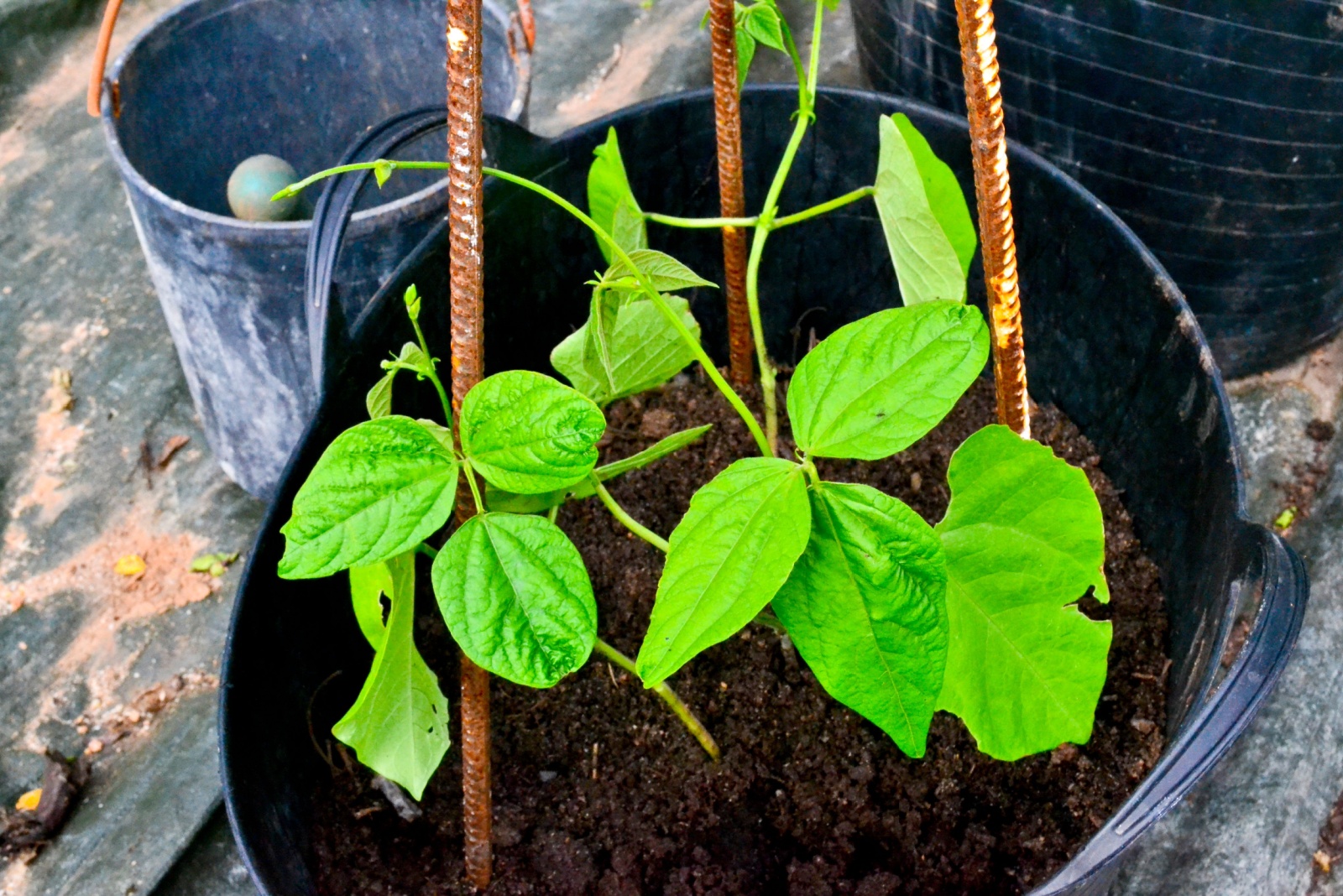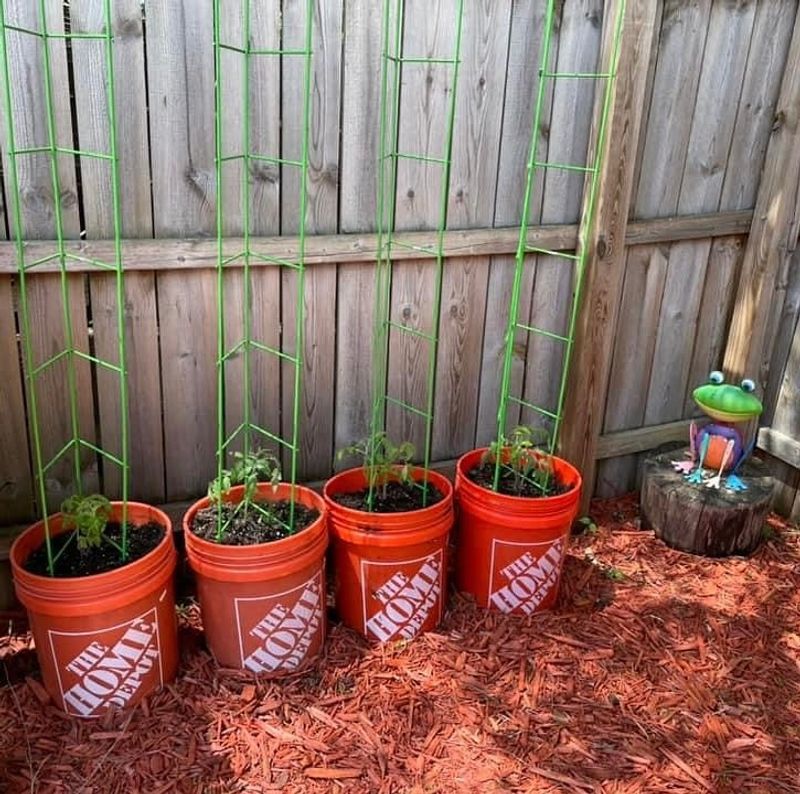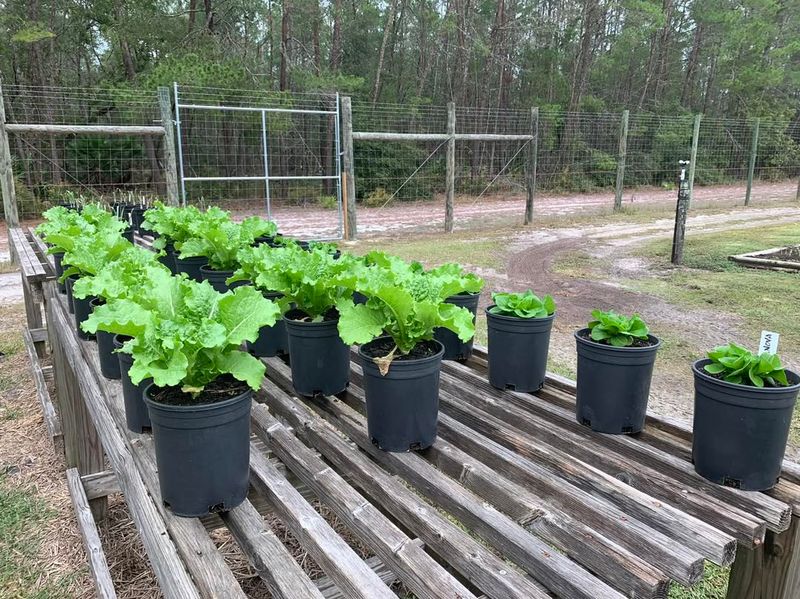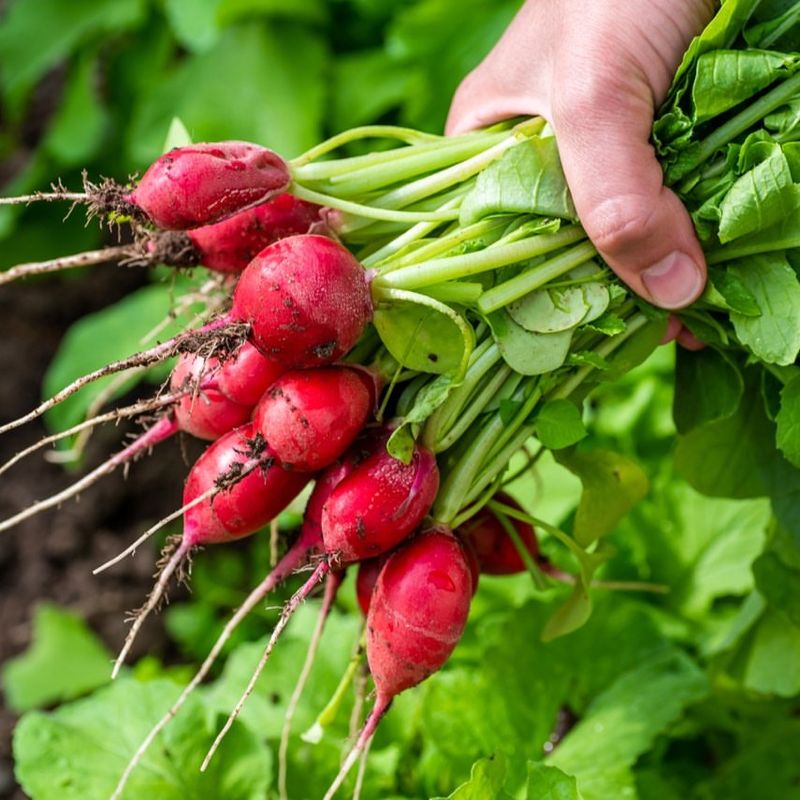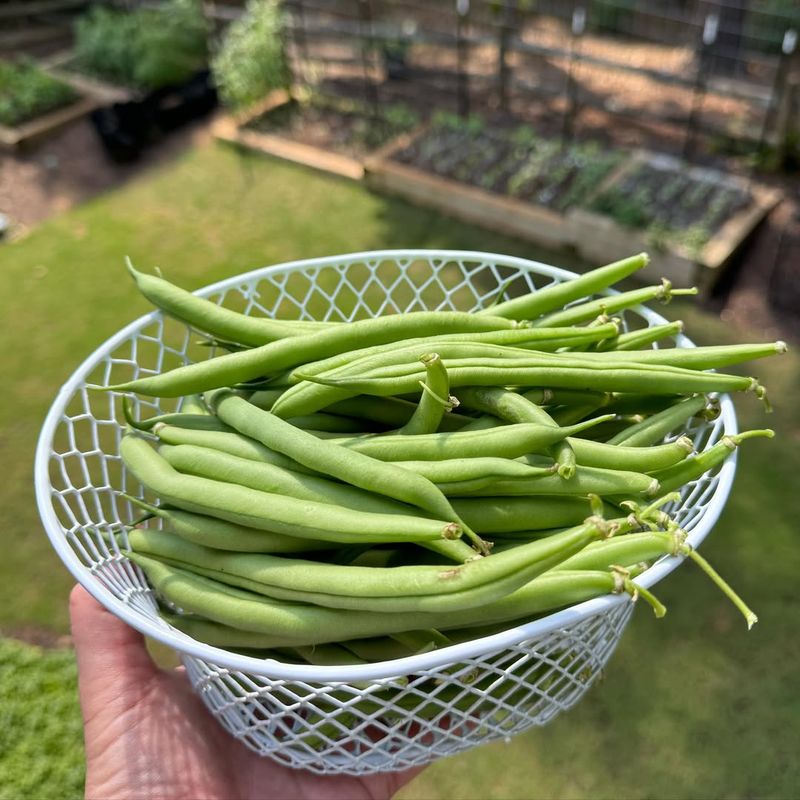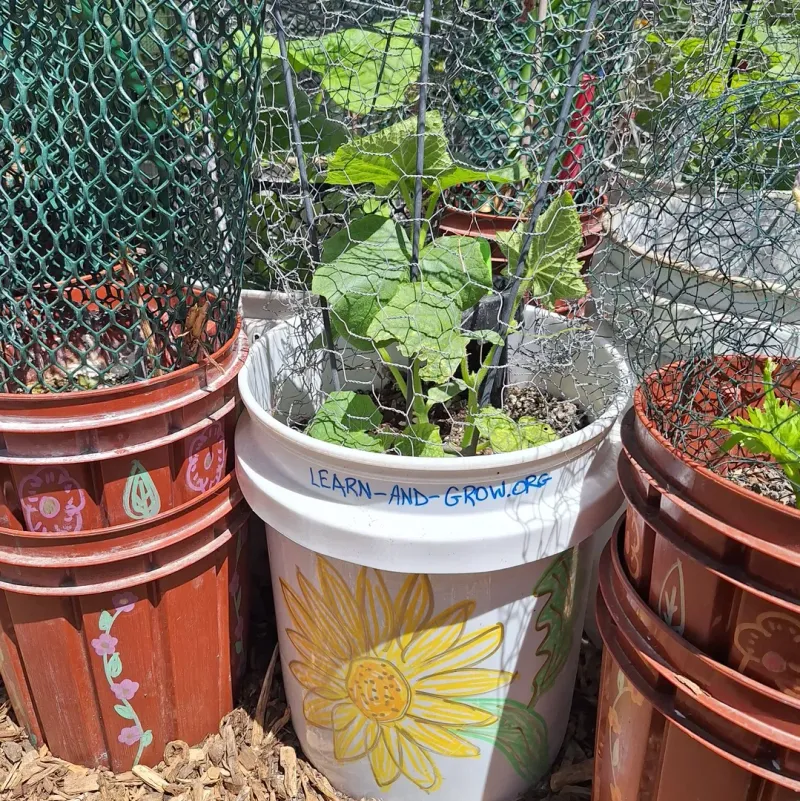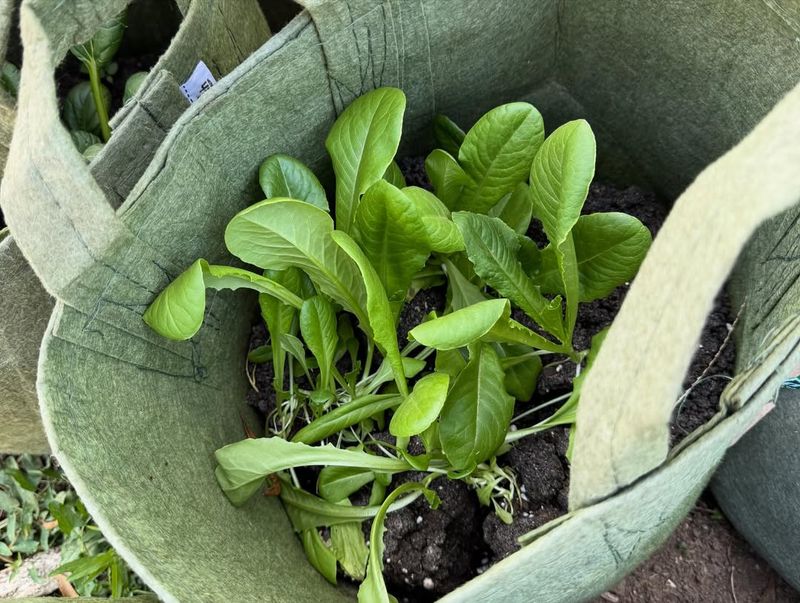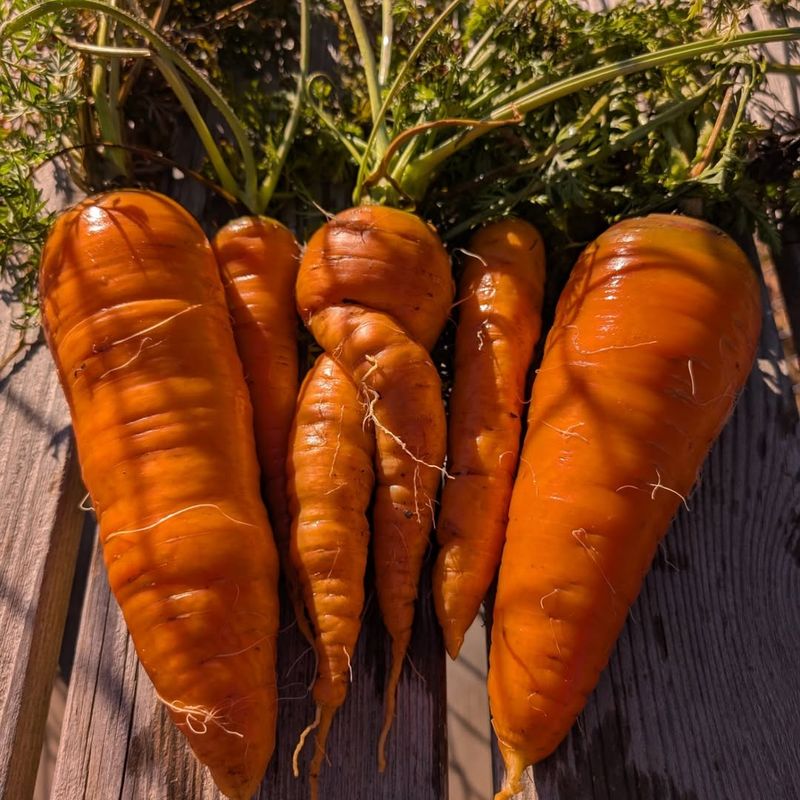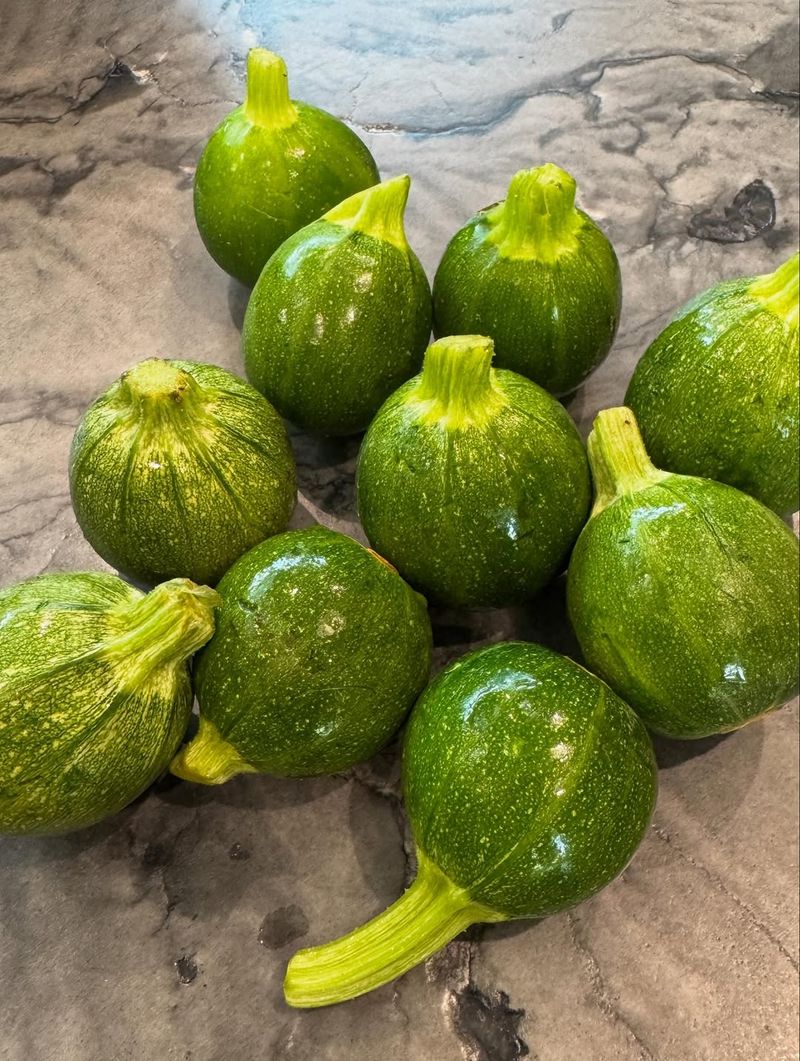Growing your own vegetables doesn’t require a huge backyard or fancy garden beds. Buckets work perfectly for container gardening, especially in Illinois where weather can be unpredictable.
You can place these portable gardens on patios, balconies, or anywhere with enough sunlight. Get ready to discover which vegetables thrive in buckets and produce delicious harvests all season long!
1. Tomatoes
Buckets are practically made for tomato plants, and Illinois gardeners have been using this trick for years. Choose determinate varieties like Patio or Bush Early Girl for easier bucket growing. A five-gallon bucket gives roots plenty of room to spread and support heavy fruit production.
Make sure your bucket has drainage holes at the bottom to prevent waterlogged soil. Add a tomato cage or stake for support as your plant grows taller. With consistent watering and full sun exposure, you’ll harvest juicy tomatoes from July through September in Illinois’s climate.
2. Lettuce
Lettuce loves the cooler temperatures that Illinois springs and falls deliver perfectly. Shallow roots make this leafy green ideal for bucket cultivation, even smaller containers work great. You can harvest leaves continuously by picking outer ones first, letting inner leaves keep growing.
Plant lettuce seeds directly in your bucket about four weeks before the last spring frost. Space them a few inches apart for proper air circulation. The beauty of bucket growing is you can move lettuce to shadier spots during hot summer days, extending your harvest season considerably.
3. Peppers
Both sweet bell peppers and spicy varieties flourish when grown in buckets throughout Illinois. A single plant per five-gallon bucket provides enough space for healthy root development and abundant pepper production. Peppers actually prefer the warmer soil temperature that buckets naturally provide compared to ground planting.
Start with transplants after the last frost date when nighttime temperatures stay above 55 degrees. Position your bucket in the sunniest spot available, as peppers need at least six hours of direct sunlight daily. Water regularly and watch your plants produce colorful peppers from midsummer until the first fall frost.
4. Radishes
Speed demons of the vegetable world, radishes go from seed to harvest in just three to four weeks. Their compact size makes them perfect for bucket gardening, and you can grow multiple rounds throughout Illinois’s growing season. Kids especially love growing radishes because results come so quickly.
Scatter seeds directly into your bucket filled with loose, well-draining soil in early spring. Keep the soil consistently moist for the crispest, mildest-tasting radishes. Plant another batch every two weeks for a continuous supply, stopping when summer heat arrives and resuming again in late August for fall harvests.
5. Green Beans
Bush bean varieties transform buckets into productive mini-farms without requiring trellises or complicated support systems. Each five-gallon bucket can hold three to four bean plants that produce handfuls of crisp, tender beans. Illinois’s warm summers create perfect conditions for beans to thrive and produce heavily.
Wait until soil temperatures reach 60 degrees before planting seeds directly into your bucket. Plant seeds about one inch deep and keep soil moist during germination. Within 50 to 60 days, you’ll be harvesting fresh beans for dinner, and plants often produce multiple flushes of beans throughout the season.
6. Cucumbers
Compact cucumber varieties like Bush Pickle or Spacemaster thrive in bucket environments across Illinois. A single plant needs a five-gallon bucket minimum, and adding a small trellis helps vines climb and saves space. Buckets warm up faster than garden soil, giving cucumbers the heat they crave for maximum production.
Plant cucumber seeds or transplants after all frost danger passes in late May. Water deeply and regularly since cucumbers are 95 percent water themselves and need consistent moisture. Harvest cucumbers when they reach the size you prefer, and pick them frequently to encourage the plant to keep producing more.
7. Spinach
Cool-season champion spinach absolutely loves bucket growing during Illinois’s spring and fall months. Shallow roots mean you don’t need deep containers, making spinach extremely flexible for small-space gardening. You can start harvesting baby leaves in as little as three weeks after planting seeds.
Sow spinach seeds directly in buckets four to six weeks before the last spring frost date. Space seeds about two inches apart and keep soil consistently moist for best germination. When summer heat approaches, spinach bolts quickly, so enjoy your harvest early and plant again in late August for a delicious fall crop.
8. Carrots
Bucket growing actually works better for carrots than heavy clay soil common in many Illinois gardens. Deep buckets allow straight, unblemished carrot development without rocks or hard soil causing weird shapes. Choose shorter varieties like Danvers or Chantenay for best bucket success, though standard carrots work too.
Fill your bucket with loose, sandy soil mixed with compost for easiest carrot growing. Sow seeds directly and thin seedlings to about two inches apart once they sprout. Carrots take patience, requiring 60 to 80 days to mature, but the sweet, crunchy reward makes the wait worthwhile for Illinois gardeners.
9. Zucchini
Surprisingly, zucchini adapts wonderfully to bucket life despite its reputation for sprawling growth in traditional gardens. One plant per five-gallon bucket produces plenty of squash for fresh eating and sharing with neighbors. Compact varieties like Raven or Eight Ball work especially well in containers throughout Illinois’s summer months.
Plant zucchini after the last frost when soil warms up completely in late May or early June. Place your bucket where it receives full sun and water deeply every few days. Harvest zucchini when they’re six to eight inches long for the best flavor and texture, and check plants daily since they grow incredibly fast.
10. Kale
Tough and cold-hardy, kale practically begs to be grown in buckets across Illinois. This superfood vegetable actually tastes sweeter after experiencing light frosts, making it perfect for extended fall harvests. A single kale plant in a five-gallon bucket provides leaves for weeks of healthy salads and smoothies.
Start kale from seeds or transplants in early spring or mid-summer for fall crops. Harvest outer leaves first, allowing the center to continue producing new growth. Kale tolerates Illinois’s temperature swings better than most vegetables, and bucket mobility lets you protect plants during extreme weather by moving them to sheltered locations.

